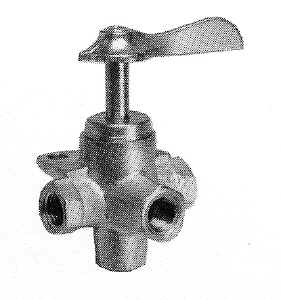Four Way Valves
4 Way Valve or four-way cock is a fluid control valve whose body has four ports equally spaced round the valve chamber and the plug has two passages to connect adjacent ports. The plug may be cylindrical or tapered, or a ball.It has two flow positions, and usually a central position where all ports are closed.
It can be used to isolate and to simultaneously bypass a sampling cylinder installed on a pressurized water line. It is useful to take a fluid sample without affecting the pressure of a hydraulic system and to avoid degassing. It was used to control the flow of steam to the cylinder of early double-acting steam engines, such as those designed by Richard Trevithick. This use of the valve is possibly attributable to Denis Papin. Because the two L-shaped ports in the plug do not interconnect, the four-way valve is sometimes referred to as an × port.
These valves have four or five pipe connections, commonly called ports. One pressure inlet, two cylinder ports providing pressure to the double acting cylinder or actuator and one or two outlets to exhaust pressure from the cylinders. They have three types of construction, single solenoid, dual solenoid or single air operator.4-way valves were developed for use in manual and automatic hydraulic or pneumatic control systems. They offer versatility in operation requirements and allowable pressure limits.
These valves are suitable for use on clean air, natural gas, L.P. gases, petroleum-based lubricants and hydraulic oils as well as many other fluids.

